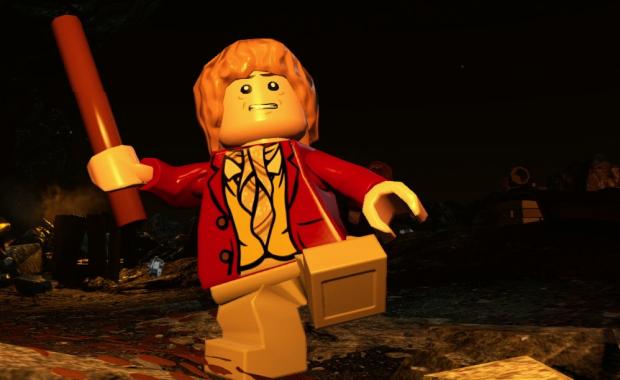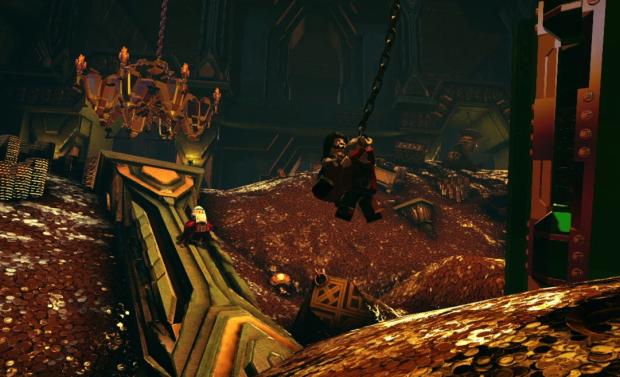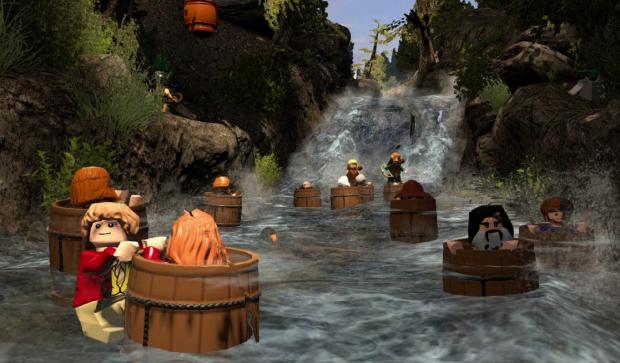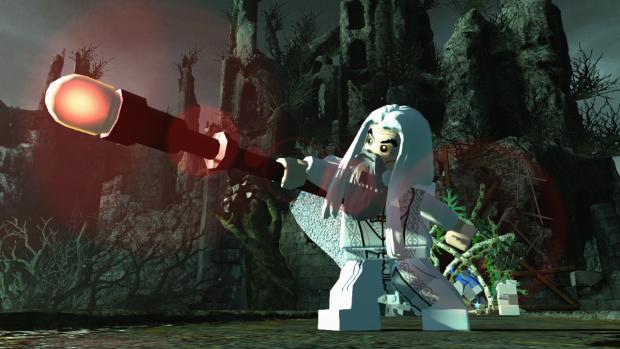LEGO The Hobbit Review
Given the success of LEGO: The Lord of the Rings and the continued appeal of the ongoing Hobbit trilogy, it was only a matter of time before worlds merged once more and gamers were treated to another foray into the block-built version of Tolkien’s fantasy universe.
It sounds trite to say it, but if you’ve ever played a LEGO game, you’ll know exactly what to expect. Returning to the world of Peter Jackson’s epic adaptations is a welcome move, but the gameplay mechanics are still sorely in need of a revamp. Following along with the events of the first two Hobbit movies delivers the same familiar sense of not-quite-nostalgia as we’ve come to expect from the series, but unfortunately unfinished source material means an unfinished story, something that only compounds the feeling of disappointment that pervades the experience.

Still, it’s not all bad. Far from it, in fact. This is a LEGO game after all, and remains as playable as any that came before it. The story mode sees you guiding Bilbo, Gandalf, and the Company of Dwarves on their quest to rid Erebor of the dragon, Smaug, passing through by-now familiar locations such as Bree, Rivendell, and the eponymous subterranean city itself. While the story dictates which characters you control at which point, returning in free play mode allows you to switch between the 100+ characters at will to use their abilities to reach tricky collectibles.
The world of Middle-earth, while oddly comforting, makes for a less focused hub than LEGO: Marvel Superheroes‘ New York City. Even with the fast travel, it’s a little too sprawling and the added graphical density of the next-gen versions makes finding your way around a bit of a chore in certain areas where the environments are simply too busy. It’s also worth pointing out that TT have had to dig deep to fill the character roster this time around. Besides big names like Legolas, Gandalf and Saruman, it can be hard to tell the figures apart – especially among the thirteen dwarves – and you rarely get the same level of unexplainable joy controlling, say, the fat ginger one, as you did slipping into Aragorn’s well-worn leathers.

As with all LEGO games, The Hobbit is a series of straightforward puzzles interspersed with button-mashing combat and light platforming. Picking the right character for each element of a given puzzle accounts for 80% of the challenge, which at least is made a little trickier because each of the main story characters has a unique ability. One of them can mine, for example, while another can use his sling to activate switches. Gandalf is the only one who can go into dark places (the dwarves rather amusingly run out of the shadows screaming), and Legolas is nimble enough to swing on embedded arrows.
Charmingly, you can use certain areas as foundations for a “dwarf stack”, which is exactly as the name suggests. You stack two or three dwarves atop one another, and allow a different character to climb up them. The Master Builder minigame also returns from The LEGO Movie Video Game, whereby you choose the missing parts of a large build from a selection wheel, with the aim of creating an environmental feature like a lift or a giant key.

Occasional set-pieces are enough to amuse rather than excite. Climbing the Stone Giants as they pelt one another amidst a raging thunderstorm, or out-running a pack of warg-riders as Radagast the Brown are among favourites – or there are always the floating barrels for fans of the second movie. Ultimately, though, this is a very simple game aimed at younger gamers – even the humour seems angled more towards the under-tens this time. Without the appeal of a universe like Marvel’s or the novelty of an original storyline, there’s little beyond the gentle comedy to truly capture anyone’s imagination.
But despite the negatives, the only real issue that holds The Hobbit back is that it is a LEGO game – a double-edged classification at best. The franchise barely changes more than its clothes from one iteration to the next, and the joke started to wear thin several adaptations ago. The mass appeal and wealth of characters found in source material like Star Wars, DC or Marvel can’t be matched by the comparatively small cast and plot of The Hobbit, and it’s becoming a little disheartening to see TT churn out similar mechanics with different skins so quickly.

VERDICT: LEGO: The Hobbit is not a bad game. It’s not even a bad LEGO game. In fact, it’s one of the stronger entries to bear the name for quite a while. It looks great, the gameplay has enough variety to remain interesting and the sampled movie dialogue (and that mesmerising score) add an air of gravitas to the whole shebang. But, it is still just another LEGO game and, as such, does little to make it stand out from its ever-increasing crowd of peers.
Although a decent jaunt for fans of either franchise, this is an example of a game created purely because the developers had the means to create it. This franchise is no longer essential, and there is serious work to be done if TT want their over-fed baby to remain fresh and current, and not merely soullessly lucrative. An enjoyable romp in of itself then, but by this point no one but kids and fans need really apply.

GOOD. A game that scores 7/10 is worthy of note, but unworthy of fanfare. It does many things well, but only a few of them incredibly well and, despite a handful of good qualities, fresh ideas and solid mechanics, it fails to overwhelm.
Review code provided by publisher.




